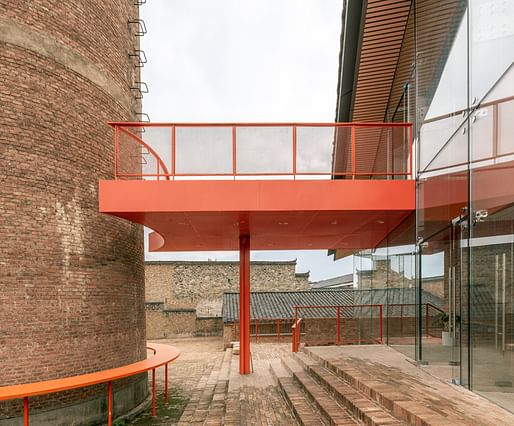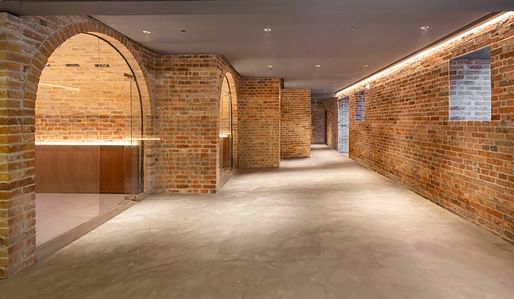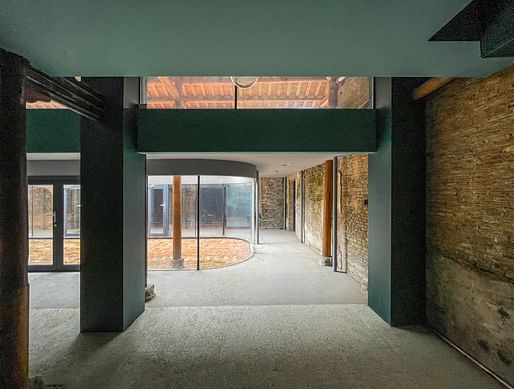
A team led by Liu Kecheng Design Studio and the People’s Architecture Office (PAO) has completed a regeneration and redesign of an old porcelain factory in the Imperial Kiln Historic District of Jingdezhen, China. Using what PAO calls a ‘Plugin Architecture’ approach, the project saw the placing of architectural insertions within and adjacent to existing building, giving new use to the site while respecting historic elements.

The porcelain factory speaks to the wider history of Jingdezhen, whose porcelain production stretches back over 1000 years and earned it the title of China’s ‘Porcelain Capital.’ To reactivate the factory, PAO and Liu Kecheng designed a modern structure to form a focal point of the site. Topped by a double-pitched roof, the three-story glass building houses exhibition spaces and a cafe.

“The transparency of the glass enclosure introduces a sense of openness, contrasting with the solid, traditional buildings nearby,” the team notes. “The roof, covered in traditional clay tiles, appears to float above the transparent enclosure, creating a welcoming spatial extension of the public square.”

From afar, the factory’s clay tiles blend with the surrounding urban fabric. Approaching the scheme, the brick paving of the courtyard extends from the exterior though the building’s inteior, becoming an “articulated landscape of steps” that serves as public seating while “gracefully accommodating the elevation change between the public square and the courtyard.”

On the opposite side of the square, barrel-vaulted brick rooms form the facade at the building’s base, while the third floor sees a balcony extending towards a large pre-existing chimney. Meanwhile, surrounding the glass building on three sides is a new restaurant and old porcelain workshops that have been revitalized through the Plugin Architecture approach. Original wood and brick structures have been kept intact, while new architectural insertions upgrade the old buildings’ functionality.

“Inside, these modules provide insulated and conditioned sleeping quarters, office spaces, and meeting rooms,” the team adds. “Kitchen and bathroom modules add new functionality. Stairs and walkways are inserted both inside and outside to connect spaces and maximize their use. The new Plugin components are designed as modern insertions, visually distinct from their historic surroundings yet functionally integrated.”
1 Comment
+++++
This works in so many ways. The different shapes of the building—spiral stairs, arches, triangles, etc.—complement the chimney and give it a sculptural base. And the chimney adds a vertical element to a flat site, providing a sculptural presence itself as well as serving as a beacon to find this center. I assume, from the drawings, the preserved factory extends much further.
Block this user
Are you sure you want to block this user and hide all related comments throughout the site?
Archinect
This is your first comment on Archinect. Your comment will be visible once approved.